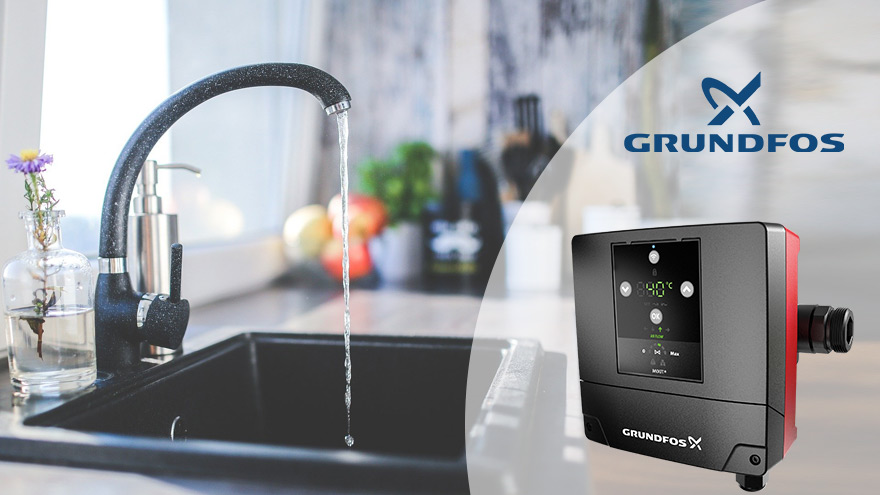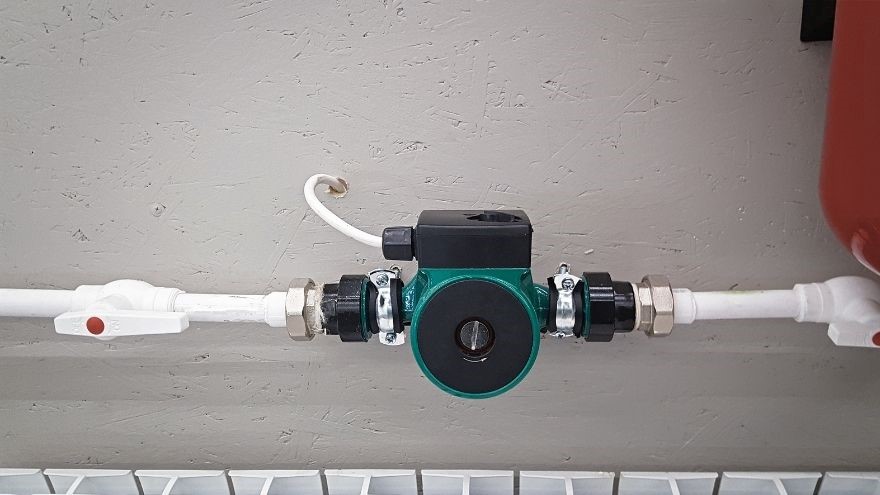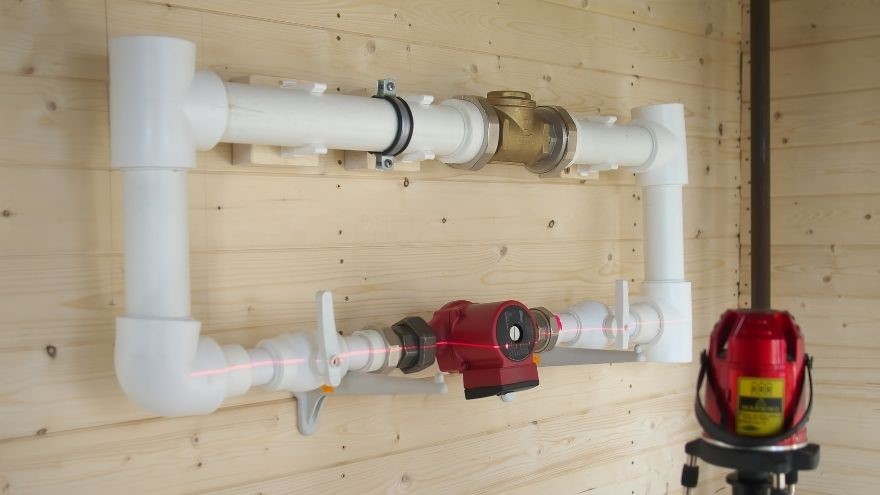Circulation pumps and circulating pumps are hydraulic flow machines that are used to force the circulation of liquids in closed systems. Since both perform the same functions, many users may wonder what exactly makes them different. In our guide, we will answer the question of how circulation and circulation pumps work and where they are used.

From this article you will learn:
- how circulation and circulation pumps work,
- where circulation pumps are used and where circulation pumps are used,
- what are the differences between circulating pumps and circulation pumps?
Circulation pumps - how do they work?
A circulation pump is a device used to pump water at elevated temperatures in systems responsible for preparing domestic hot water. Its purpose is to maintain constant pressure and temperature of the liquid at all points in the system. This solution works well in single- and multi-family buildings, as well as in industrial facilities, farms and public spaces. In a word, circulation pumps are used wherever constant access to hot water is necessary.
Check out Grundfos circulation pumps at the Onninen wholesaler
The circulation pump is designed to work in a clean, chemically non-aggressive and pollution-free environment. The pressure it generates allows only to overcome the resistance of the installation, but not to raise the water to great heights. This type of device is most often made of stainless steel, brass or bronze, so it can work with water at high temperatures without any problems.

You will find many different types of circulation pumps on the market. The available variants include single- or three-phase, monoblock, maintenance-free or electronically controlled pumps.
Thanks to the circulation pump, the medium constantly circulates in the installation. This means that hot water is immediately available when you turn on the tap, regardless of the number of water consumption points. The device therefore helps save water, which makes it an economical and environmentally friendly solution. Moreover, this type of pump has a very long service life, and its installation is relatively easy and quick.
Circulation pumps – how do they work?
A circulation pump is a commonly used device used to force water circulation in closed central heating systems. It is installed, among others, in surface, solar and air-conditioning installations. Just like the circulation one, it is perfect for both residential buildings, industrial plants and public utility facilities.
Check out Grundfos circulation pumps at the Onninen wholesaler
The design of circulation pumps includes a special rotor responsible for increasing the angular momentum when pumping water so that it reaches all exchangers in the building evenly. Thanks to this, the flow pressure of the medium is maintained, so each room receives the required amount of heat. The use of a circulation pump also protects the central heating boiler and eliminates the need to install it below the level of the receivers. This guarantees greater flexibility at the stage of designing the system, because the furnace can be located, for example, on the first floor, and not only in the basement.
Due to the operation in very demanding conditions, circulation pumps are made of highly resistant materials, such as stainless steel, brass, cast iron or durable plastics. The models available on the market are adapted to the requirements of most available boilers. They are also equipped with a (manual or automatic) three- or four-stage engine speed control function.

Circulation pump and circulation pump – what's the difference?
While it may seem that circulation and circulation pumps perform exactly the same function, the above descriptions clearly explain what the main difference between them is. While the former are used in hot water installations, the latter are installed in central heating systems. It is worth keeping this in mind when choosing pumps, because using them contrary to their intended purpose may result in inefficient operation of the device or even permanent damage.
The method of application is the most important difference between circulation and circulating pumps, but it also results in other contrasts. Different methods of operation determine, for example, the materials from which the devices are made. Models intended for hot water installations should be, above all, resistant to corrosion (hence the use of stainless steel or bronze). Since they pump drinking water, they must also have appropriate certificates. Pumps intended for central heating installations, whose bodies are made of, for example, cast iron, have lower requirements.
Circulation and circulation pumps in the Onninen offer
If you are looking for a circulation or circulating pump for your client's installation, be sure to check out the Grundfos range available at Onninen. It is the world's largest manufacturer of pumps from Denmark. Every year, it supplies over 16 million devices of this type to the market, while ensuring their quality and reliability.
Exchange benefits in the new OnnTop loyalty platform!
A wide range of circulation and circulation pumps available in our online wholesale store will allow you to easily select solutions perfectly tailored to the needs of your customers. Onninen's offer includes, among others, products such as:
- The Grundfos ALPHA 2 model E circulation pump is described by the manufacturer as the most energy-efficient on the market. It is equipped with a one-way radio communication system, allowing for efficient and effective balancing of water pressure and temperature in the installation.
- Grundfos COMFORT 15-14 BA PM circulation pump - another example of a pump used in hot water installations. It is made of brass and equipped with a 1.5-meter cable with a plug, permanently connected to the device.
- Grundfos circulation pump Model UP 20-15N - glandless circulation pump with a wet motor rotor, sealed with two seals. It is made of stainless steel and equipped with a shaft and a ceramic thrust bearing. Its rotor is highly resistant to corrosion.
- Grundfos ALPHA 1L circulation pump - a highly efficient, glandless circulation pump, intended for all types of heating installations with variable flow rates. It is made of cast iron.
- Grundfos MAGNA1 circulation pump - an electronic pump designed for various types of heating and air-conditioning installations. It is a basic solution that works best in simple systems. Like ALPHA 1L, it is made of cast iron.
- Grundfos MAGNA3 circulation pump - one of the large circulation pumps used to optimize the operation of central heating systems. It is equipped with communication devices and motors with electronic speed control. Thanks to advanced technologies, the pump automatically monitors the condition of the heating installation and configures the settings, adapting its parameters to the current demand.
These are just a few examples of circulation and circulation pumps from the Grundfos offer, which you can find in the Onninen installation wholesaler . See what else awaits you in our assortment and choose the perfect solutions for your customers!
Do you have questions about the industry? Join the Świat Instalacji group!